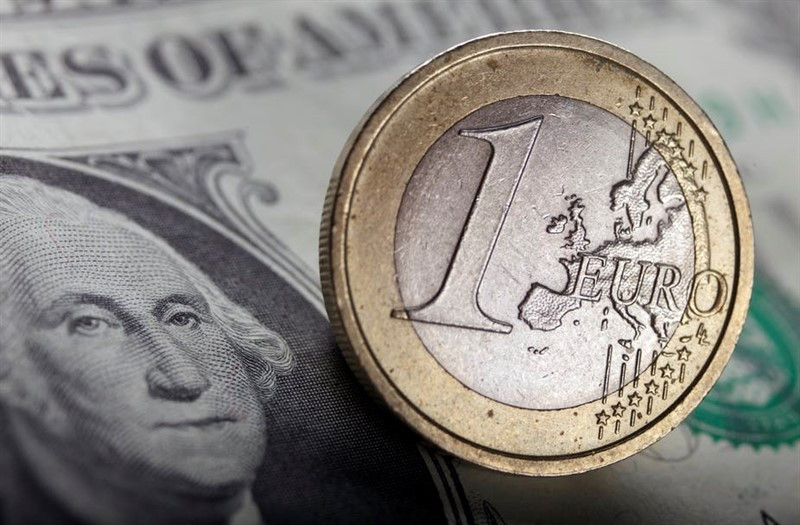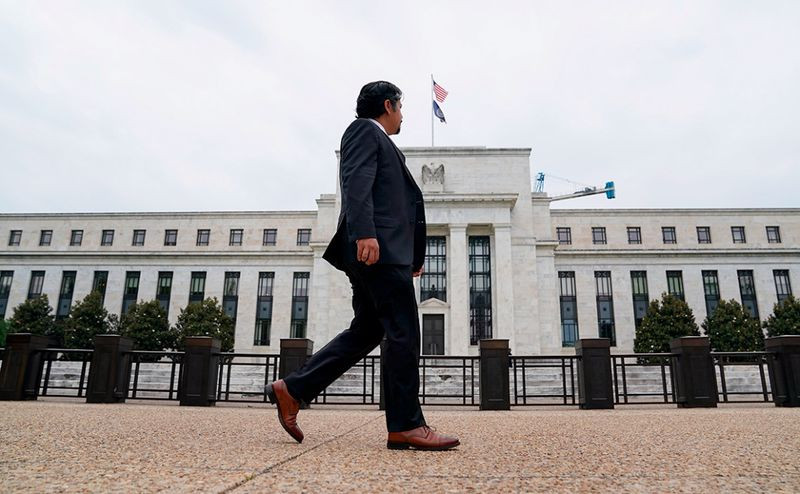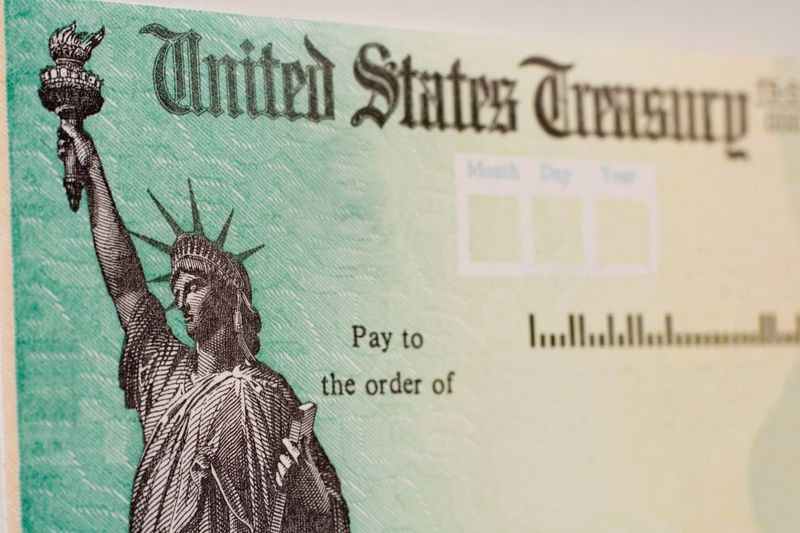
Despite rebounding more than 2% from 20-year lows, EUR/USD is still in a long-term downward trend.
Currently, the pressure on the euro against the dollar is exerted by the continued divergence in the monetary rates of the Federal Reserve and the European Central Bank, as well as talk that the European economy risks slowing down faster than its American counterpart.
The Fed began to curtail the quantitative easing program in November last year, and since March of this year, it has begun to raise the key rate. The ECB, on the other hand, refrained from cutting QE for a long time, seeking to support economic growth in the face of overcoming the consequences of the pandemic. The ECB raised the discount rate for the first time only in July, and then only by 0.25%.
Interest rate differentials on both sides of the Atlantic, along with growing geopolitical tensions and fears of a cooling global economy, have allowed the greenback to reach levels not seen since September 2002. The same reasons led to the fact that the euro went below parity in tandem with the dollar, but then was able to win back some of the losses.
According to some experts, the single currency has a good chance of recovery. They indicate that the trade balance and budgetary performance of European countries as a whole is significantly better than that of the United States, as is the debt-to-GDP ratio.
Supporters of this point of view believe that the euro is actually much better secured, and its weakening against the dollar will increase the competitiveness of European goods in world trade.
"If the political aggravation between the West and Russia subsides, this will give Europe a better chance of getting out of the crisis compared to the United States, which, with an expensive dollar, will find it even more difficult to compete and pay off debts," they note.
Rabobank and UniCredit strategists predict that in the medium term the euro will strengthen against its American counterpart to $1.05-1.06.
At the same time, analysts admit that the EUR/USD pair may turn around earlier if the US central bank softens its position as economic growth slows down and there are signs that inflation has peaked.
"By September, the Fed's first precondition for slowing or stopping rate hikes will be met because monthly CPI data for July and August will be much lower than the last couple of months," Pantheon Macroeconomics said.
"However, as much as we would like the Fed to drop its aggressive tone now, it is probably too early," they said.

The world's most powerful central bank is still on course for the sharpest monetary tightening in decades.
Therefore, according to FCP Financial Management analysts, the dollar is doomed to grow in the coming months, and so far nothing threatens it.
Over the past decade, investors have become accustomed to tying a slowdown in economic growth or the risk of a recession in the US to the fact that the Fed is turning to cut rates and QE. However, this time the number one problem for the central bank is inflation. The Fed may still have to inflict some pain on the national economy before seeing more signs of inflation peaking.
If the Fed continues to cool the economy, the rest of the world will also suffer - this is an unwritten rule.
"Forecasts for the growth of the US economy in 2022 have declined significantly to levels close to our own estimates. However, growth expectations in the rest of the world may also decline further," Morgan Stanley strategists said.
"We believe the global outlook supports maintaining USD long positions," they added.
Analysts at NatWest expect the greenback to remain supported by inflows to safe havens over the long term amid a deteriorating global outlook.
"Downward risks to eurozone growth and broader growth concerns around the world tend to suggest a stronger dollar," they said.
On Tuesday, the greenback confidently strengthened against its main competitors amid investors' flight from risk, which was reflected in the fall of key Wall Street indicators.
The US stock market closed yesterday's trading in the red due to a sharp deterioration in earnings forecast for leading retailer Walmart.
The retail giant said it expects adjusted earnings per share to decline by 8-9% in the second financial quarter and by 11-13% in the current fiscal year.
Inflation has forced shoppers to spend their money on food and fuel instead of discretionary items like electronics and clothing, the company said.

General Motors said it has cut hiring and delayed planned spending in response to inflation and to hedge against a possible wider slowdown in economic growth.
Negative added disappointing statistical data for the US.
Thus, the consumer confidence index of Americans in July fell to 95.7 points, while experts expected the index to decline to 97.2 points.
As a result, US stock indices sank by an average of 0.7-1.9% the day before.
Meanwhile, fears about the reduction in energy supplies to the EU put pressure on the euro.
Last Monday, the Russian company Gazprom, which supplies blue fuel to European countries, announced that one of the turbines of the Nord Stream 1 gas pipeline would be stopped for repairs on Wednesday.
Meanwhile, the head of the European Commission, Ursula von der Leyen, called on EU countries to prepare for a complete halt in gas supplies from Russia. She stated the need to save resources even in those territories where dependence on Russian resources is insignificant.
According to the IMF, even those European countries that do not use Russian gas could lose up to 0.8% of GDP due to various side effects in the event of one of the worst scenarios.
Commerzbank specialists see the possibility of further weakening of the single currency, believing that the threat of a serious energy crisis in Europe has not yet been fully taken into account in its course.
In the event of a severe energy crisis, the ECB will have to focus on measures to support the economy, which will weaken the fight against inflation, analysts say. In such a scenario, the euro against the dollar will fall below the parity level, they say.
As a result of trading on Tuesday, the EUR/USD pair plunged almost 1% to 1.0114, demonstrating the sharpest decline since July 11.
The defensive greenback is losing momentum on Wednesday, while the euro clings to modest gains, tracking the improvement in investor sentiment.
Major US stock indexes are growing noticeably today. Strong financial reports from tech giants Microsoft and Alphabet brought back a positive mood to the market.
As the Fed's influence on the economy becomes more apparent, traders are now wondering if the central bank is in danger of overdoing it.

The US bond market is signaling increased risks of a recession: the yield on 2-year bonds is now higher than that of 10-year bonds. This is a possible sign that the market is losing faith in short-term economic growth and reflects the possibility that the Fed could be forced to cut rates in a relatively short amount of time.
"The Fed hasn't even gone neutral yet. Therefore, it is too early to assume that the regulator will begin to soften its policy," said strategists Janus Henderson Investors.
The US central bank is due to announce its decision on monetary policy following a two-day meeting.
It is widely expected that the central bank will raise the rate by 75 basis points, which is already fully priced in and is unlikely to provide significant support to the dollar.
A moderate decline in long-term inflation expectations in the University of Michigan Consumer Sentiment Survey allowed investors to refrain from pricing in a 100 basis point rate hike.
Does the weakening of inflation expectations mean that the worst is over? If Fed Chairman Jerome Powell gives a positive answer to this question, it will be relief for risky assets and hit the dollar.
However, Powell is likely to take a different path, as he needs to convince the public that inflation will fall, thereby returning consumer behavior to the norm that existed before the price hike.
It is clearly too early to claim a victory, even a partial one, as consumer prices continue to rise. Powell's hawkish message to the market about fighting inflation will cause stocks to fall and drive the greenback up, ending his reprieve.
The key support for EUR/USD is currently 1.0100. A breakthrough of this level with the Fed's hawkish tone promises the pair additional losses in the direction of 1.0000 and 0.9950.
If rising recession fears cause the US central bank to take a cautious tone and vow to slow down the pace of rate hikes in the future or even take a break, the dollar will face new selling pressure. This will help the major currency pair rise.
Strong resistance for EUR/USD lies at 1.0150, near which the 100-day moving average passes. If this level turns into support, bulls could target 1.0200 (50-day moving average) and 1.0250 (38.2% Fibonacci retracement level). Given the risks of a deepening energy crisis in Europe and the fact that the ECB continues to fall behind its US counterpart in terms of policy tightening, it will not be easy for the pair to move towards a long recovery.
 English
English 
 Русский
Русский Bahasa Indonesia
Bahasa Indonesia Bahasa Malay
Bahasa Malay ไทย
ไทย Español
Español Deutsch
Deutsch Български
Български Français
Français Tiếng Việt
Tiếng Việt 中文
中文 বাংলা
বাংলা हिन्दी
हिन्दी Čeština
Čeština Українська
Українська Română
Română

